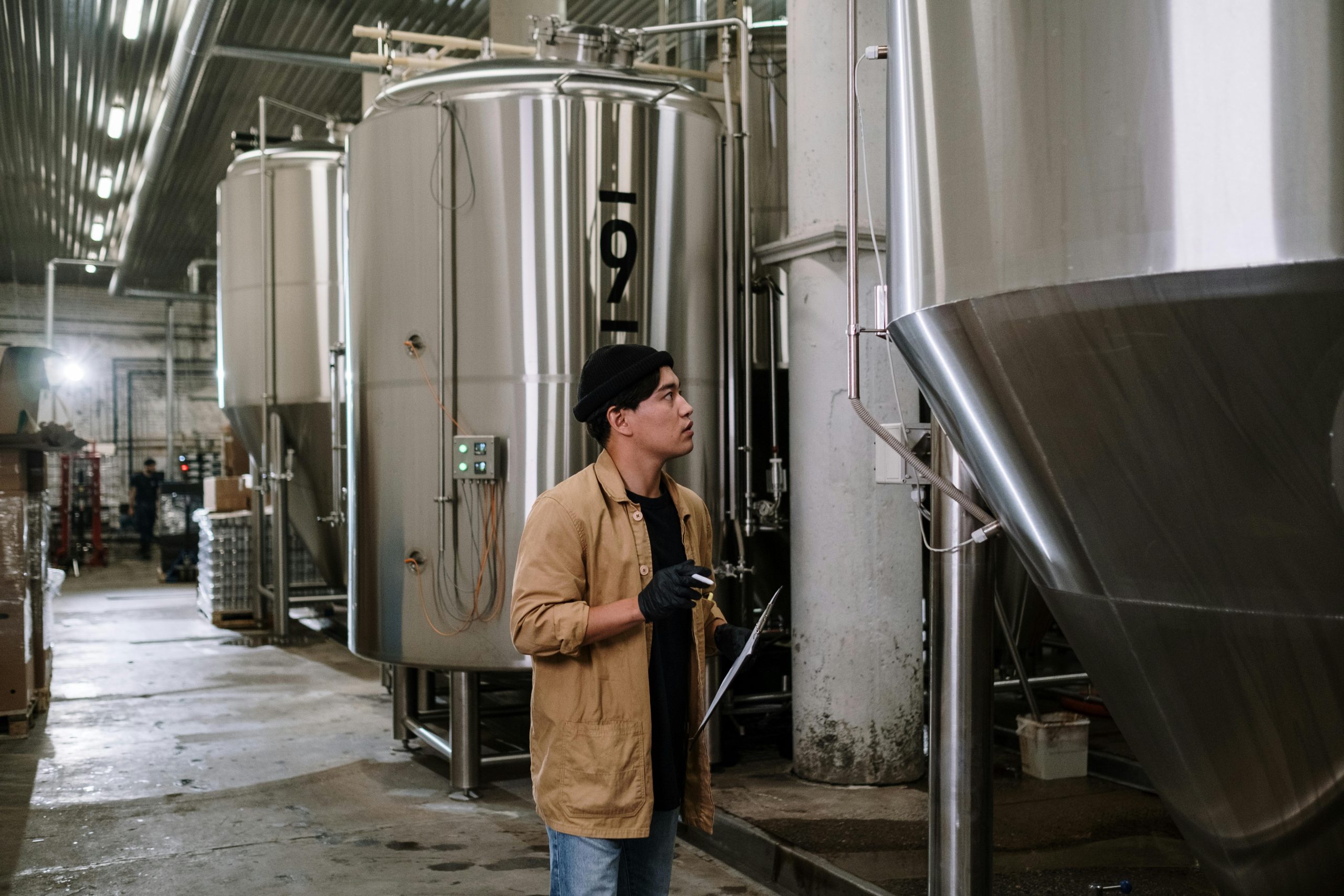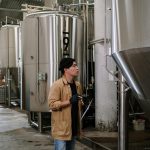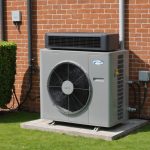Managing Legionella risks protects tenants and ensures legal compliance without complex procedures. Understanding key regulations and applying straightforward measures—like temperature control and regular flushing—helps landlords maintain safe water systems. This practical approach balances health priorities with manageable actions, reducing the danger of Legionnaires’ disease while meeting legal obligations effectively and confidently.
Understanding Legionella Compliance and Its Significance
Legionella Log Book plays a vital role in maintaining water safety standards and demonstrating compliance with legal requirements in water system management. This document, mandated by health and safety regulations, ensures that all control measures and risk assessments are properly recorded and accessible. It is a comprehensive record that includes critical information such as temperature checks, maintenance activities, inspections, and microbial testing outcomes, which are essential for effective legionella control.
In the same genre : Facilities management services across the uk: reliable solutions for your business
Legionella compliance involves adhering to strict legal and regulatory frameworks, notably the UK HSE L8 Approved Code of Practice (ACoP L8). These regulations define the responsibilities of property owners, facilities managers, and duty holders to prevent the proliferation of legionella bacteria. Maintaining an up-to-date Legionella Log Book aligns with these legal standards by providing documented proof of ongoing risk management and control activities.
Ongoing risk management is fundamental to preventing Legionnaires’ disease, a severe form of pneumonia caused by inhaling contaminated water droplets. Proper documentation through the Legionella Log Book facilitates routine monitoring, immediate identification of issues, and prompt corrective actions. It also supports regular reviews and audits, which help ensure continuous compliance and reduce liability.
Have you seen this : Elevate your space with frosted window films today
For property owners and tenants, understanding the importance of accurate record-keeping reinforces a proactive approach to water safety. Regular temperature monitoring, system inspections, and maintenance entries in the Legionella Log Book help keep water systems within safe parameters, such as maintaining hot water above 50°C and cold water below 20°C. This approach minimizes the risk of bacterial growth and enhances overall water hygiene.
Legal and Regulatory Requirements for Legionella Management
Under the Health and Safety at Work Act (HSWA) and the Control of Substances Hazardous to Health (COSHH) Regulations, every duty holder—including landlords, business owners, and facilities managers—bears a direct legal obligation to mitigate legionella risk. Core legal requirements for legionella control begin with a thorough water system risk assessment. This defines possible legionella contamination risk factors, covering the entire water system design, use, and maintenance. Statutory codes of practice, notably the Health and Safety Executive (HSE) Approved Code of Practice L8, demand not just assessment but ongoing risk management strategies for legionella, routine water hygiene monitoring, and clear documentation for regulatory compliance.
UK Regulations and Guidance
HSE ACOP L8 and HSG274 (Parts 1-3) establish the framework for compliance with HSE regulations in the UK. They specify responsibilities of duty holders, highlight the appointment and training and certification for legionella control, and instruct on the ongoing development of an effective legionella control plan. The ACOP L8 states that all key control tasks—temperature control procedures, water system maintenance schedules, and monitoring procedures for hot and cold water—must be recorded, forming an essential compliance documentation trail. Landlords, regardless of property size, are required to complete a risk assessment frequency review and ensure that an accessible logbook is created for water system inspections. This logbook keeps a detailed record of water system flushing procedures, water system risk assessment findings, temperature logs management, and corrective actions for contamination. The logbook, mandated by statutory guidelines for water safety, not only demonstrates compliance with HSE regulations but also supports audit preparation and supports reporting and notification procedures as required by law.
International Standards and Comparisons
International perspectives on water safety compliance, such as US OSHA rules, mirror UK standards in requiring employers and building owners to implement waterborne pathogen management programmes. These usually involve compliance checklists for water systems, risk communication with tenants and staff, and reliance on accredited legionella compliance services. Globally, best practices converge on the principle of proactive legionella prevention, with regular periodic water testing and sampling, temperature monitoring devices installation, and documentation for regulatory compliance. Among commercial building water safety and industrial water system compliance sectors, international frameworks similarly emphasize the need for continuous monitoring technologies, software solutions for compliance tracking, and stakeholder responsibilities. Aligning with global advances in legionella control technology helps UK organisations strengthen compliance project management and improve workplace safety compliance outcomes for water hygiene.
The outcome: robust legal compliance frameworks, well-defined responsibilities of duty holders, and thorough documentation for regulatory compliance together guard against legionella outbreaks and demonstrate a transparent commitment to water hygiene monitoring.
Conducting Effective Legionella Risk Assessments
A thorough water system risk assessment is the foundation of any strong legionella control plan development. For both domestic and commercial properties, legal requirements for legionella control emphasise identifying potential problem areas in the water system, such as outlets prone to low usage, stagnant water points, and monitoring water temperatures. This assessment must suit the scale and complexity of the water system; for example, larger commercial facilities require more detailed evaluation than standard residential settings. Statutory guidelines for water safety, in particular the Health and Safety Executive (HSE) guidelines, instruct that the key elements of any risk review include a full system description, noting storage arrangements, temperature profiles, and any redundant pipework.
Simplified Approach for Domestic Settings
Landlords of houses or small apartments can apply a proportionate approach to legionella risk management strategies for legionella. Simple control measures often suffice, provided the water system is in regular use, water quality standards are maintained, and temperature control procedures are followed. For low-risk settings, like homes with combi boilers and no stored water, cost-effective steps such as maintaining hot water above 50°C and ensuring any water that may stagnate is flushed will usually meet compliance with HSE regulations. If a property’s water system is more complex, or control measures cannot be reliably implemented, engaging professional legionella risk assessors might be appropriate.
Enhancing Risk Assessments with Documentation
Effective water hygiene monitoring relies on structured record keeping best practices. Developing a site-specific water hygiene plan enables clear allocation of responsibilities of duty holders and better communication of legal requirements for legionella control to staff or tenants. The use of a Legionella log book, as set out by the HSE, supports ongoing temperature logs management and provides compliance document audit trails that are valuable if regulatory review occurs. Essential compliance documentation should detail periodic water testing and sampling routines, corrective actions for contamination, and water system maintenance schedules. Regular updates, triggered by changes to the water system or identification of new legionella contamination risk factors, ensure static risk assessments remain fit for purpose. Routine inspections and updates can be integrated with other scheduled visits, such as gas safety checks, to support continuous improvement of the management system for legionella control.
Implementation of Control Measures and Preventative Actions
Effective water system risk assessment begins with focused temperature control procedures. Hot water must be stored above 50°C (ideally at 60°C) and distributed so outlets remain at a minimum of 50°C, while cold water should be kept below 20°C. This direct approach curtails conditions conducive to legionella growth. Regular water system maintenance schedules should specify monitoring the required temperatures and flushing protocols, especially before occupancy or after vacancies, following statutory guidelines for water safety.
Careful management of pipework and fixtures further supports implementation of control measures. Removing unused or redundant sections of plumbing and fitting secure lids on water storage tanks are key risk reduction techniques. Landlords and building managers should routinely review their water system design considerations to guard against stagnation, as the presence of still water elevates legionella contamination risk factors. Using instantaneous water heaters, such as combi boilers or electric showers, substantially reduces stagnation and is considered a best practice in many legionella control plan development checklists.
Practical Actions for Landlords
Landlords’ health and safety policies must include proactive legionella prevention. Weekly or monthly flushing of outlets in vacant or seldom-used properties prevents water stagnation. Importing control documentation for regulatory compliance into the daily routine simplifies record keeping best practices—a reliable record is not only recommended by HSE legionella guidance but also forms the backbone of a robust audit preparation and support process. Landlords should proactively share risk communication with tenants and staff, instructing them never to alter water temperature settings, to report issues with hot or cold water immediately, and to regularly clean showerheads and taps.
Routine inspections under a compliance checklist for water systems verify that all temperature control procedures and water system flushing procedures are performed as outlined. When changes to the water system occur or new risk assessment frequency guidelines are issued, a timely review ensures compliance with HSE regulations and continually upholds workplace safety compliance. Compliance with COSHH and other public health legislation compliance rules remains a landlord’s statutory obligation.
Use of Technology and Monitoring
Continuous monitoring technologies revolutionize water hygiene monitoring. Temperature monitoring devices now allow real-time checks on both hot and cold water lines, supporting rapid corrective actions for contamination if set points are missed. The integration of compliance software for water safety—complemented by online legionella compliance tools—means all monitoring procedures for hot and cold water, inspections, and maintenance tasks can be logged, ensuring seamless compliance document audit trails.
With compliance software solutions, duty holders can establish essential compliance documentation and automate reminders for periodic water testing and sampling, managing risk assessment frequency in line with statutory codes of practice. Integration of compliance software solutions assists in adherence to evolving regulatory updates and changes, guaranteeing audit readiness for both internal and third-party compliance audits. Scheduled inspections and effective temperature logs management underscore high standards for water quality standards and environmental compliance and legionella management.
Advance adoption of compliance training workshops and consultation services for water safety plans ensures staff are equipped to maintain legal requirements for legionella control. When complex situations arise, professional legionella risk assessors and accredited legionella compliance services input specialized expertise—further safeguarding regulatory compliance across all water system inspections.
Record Keeping, Documentation, and Audit Preparation
Clear, well-organised documentation for regulatory compliance is the backbone of reliable legionella control plan development. At the heart of this process lies the Legionella log book: a central record capturing every aspect of water system risk assessment, from schematics through to temperature logs. Thorough record keeping is not only industry best practice—it is anchored in statutory guidelines for water safety and enshrined by health and safety executive (HSE) guidelines. These records act as the primary evidence during compliance checks and legal proceedings, allowing duty holders to demonstrate that all reasonable steps were taken to protect building users and meet legal requirements for legionella control.
Best Practices for Record Management
Maintaining essential compliance documentation involves more than storing paperwork. Every record relating to water system inspections, temperature control procedures, periodic water testing and sampling, and corrective actions for contamination should be kept accessible and up to date. Organisation is critical: log books must feature system schematics, maintenance records, temperature logs, and details of water system maintenance schedules. Integrating compliance software for water safety can simplify storage, allowing easy digital retrieval and enabling automated reminders for upcoming risk assessment frequency reviews or routine water hygiene monitoring tasks. Regular oversight is needed—preferably monitored by professional legionella risk assessors or managers trained in responsibilities of duty holders—to accommodate regulatory updates and changes and to ensure records reflect actual water treatment and disinfection undertaken.
Digital record-keeping not only facilitates audit preparation but also aids integration of compliance project management with broader facility operations. Automated alerts and online legionella compliance tools help teams notify stakeholders of preventive actions or non-conformities as soon as they arise, streamlining both compliance checklist for water systems and risk management strategies for legionella.
External Audits and Inspections
Third-party compliance audits offer objective verification that all statutory codes of practice and public health legislation compliance standards have been met. Prior to any audit, teams should confirm their audit preparation and support protocols are robust—meaning that all records, from temperature logs to evidence of water system flushing procedures and monitoring procedures for hot and cold water, are well-organised and readily available. Health and safety policies require that legal compliance frameworks be demonstrated at any point, especially when inspections occur as a result of an incident or an external trigger.
Those responsible—the building owners, property managers, or dedicated consultants—should ensure the management system for legionella control document trail is comprehensive. This not only covers established processes but tracks remediation, such as emergency response plans and any corrective actions for contamination, safeguarding compliance with HSE regulations. During inspections or investigations, access to complete documentation—including schematic drawings, COSHH information, records of training and certification for legionella control, and independent laboratory analyses—demonstrates active, risk-aware management.
By prioritizing detailed documentation and effective record-keeping practices, organisations enhance their waterborne pathogen management, better protect building occupants, and stand prepared for any regulatory scrutiny.
Additional Considerations and Future Trends
Emerging Trends in Legionella Control
Advancements in legionella control technology have transformed both the detection of the bacteria and ongoing water hygiene monitoring. Modern systems leverage continuous monitoring technologies and smart temperature monitoring devices to identify risk factors before contamination occurs. This real-time approach streamlines compliance with HSE regulations and enhances the implementation of control measures—supporting robust risk management strategies for legionella. Advances in remote sensing and automated alerts enable building managers to act swiftly, reducing dependency on periodic water testing alone and bolstering water quality standards.
Climate change and evolving building design present new challenges. Higher ambient temperatures and greater energy efficiency measures can create environments where water system risk assessment becomes more critical. Poorly ventilated or rarely used systems (such as in energy-saving modern buildings) increase the risk of water stagnation, already recognized as a key legionella contamination risk factor. The industry response involves updating periodic water testing and sampling routines, refining water treatment and disinfection methods, and maintaining adaptive water system maintenance schedules.
Training and Certification
Training and certification for legionella control have become central to strengthening compliance and reducing legal liabilities related to legionella. Accredited training providers and comprehensive water safety training programs guide duty holders—both in residential and commercial situations—through statutory guidelines for water safety. Their curriculums focus on the legal requirements for legionella control, documentation for regulatory compliance, and the delegation of responsibilities of duty holders according to statutory codes of practice.
Certification offers added benefits: it helps drive risk reduction techniques, strengthens audit preparation and support, and improves industry best practices. Regular refresher courses and easy access to compliance training workshops ensure staff remain updated on regulatory changes, water temperature regulation, and safe management of water storage tanks. Training records, required in essential compliance documentation, form part of robust record keeping best practices and serve as evidence of due diligence during third-party compliance audits.
Industry Best Practices and Case Studies
Effective management draws on industry best practices, grounded in lessons from case studies on effective legionella control. Notable outbreaks, as referenced by regulatory bodies, stress the dangers posed by lapses in compliance with HSE regulations. Monitoring procedures for hot and cold water systems, adoption of compliance checklist for water systems, and prompt corrective actions for contamination are critical.
Professional consultancy for legionella has become increasingly valuable. Experienced advisors support compliance project management and provide consultation services for water safety plans, ensuring integration of compliance software solutions where feasible. Feedback loops, such as those captured in compliance document audit trails, foster continuous improvement in both proactive legionella prevention and the management of waterborne pathogen risks.
Developments in compliance software for water safety and online legionella compliance tools further streamline the administration of record keeping best practices and risk assessment frequency tracking. Such technologies support building owners’ compliance obligations and facilitate compliance integration with facility management, ultimately helping all stakeholders achieve and maintain the highest workplace safety compliance standards.











